How many times have you tried to cut back on carbs?
I mean, with tempting options like pizza, cookies, and pasta, it’s literally a near-to-impossible feat.
Sure, you may have switched to ‘healthier’ carbs such as whole grains, oats, and quinoa, but what if I told you that these are no better for you according to supporters of Low Carb High Fat (LCHF) diets like Atkins or Keto.
Whether you’re just cutting down your carbs to lose a few pounds, dropping a few carbs to regulate your blood sugar levels, or eliminating them completely to go Keto, I’m going to help you each step of the way.
Because I know this may be one of the hardest challenges you’ll have to face on your journey to better health. But it’s so worth it.
So let’s do this! Let’s use the next 30 days to wean your body off of carbs and start getting it to run more efficiently starting now.
Wait, Why Are We Eliminating Carbs Anyway?
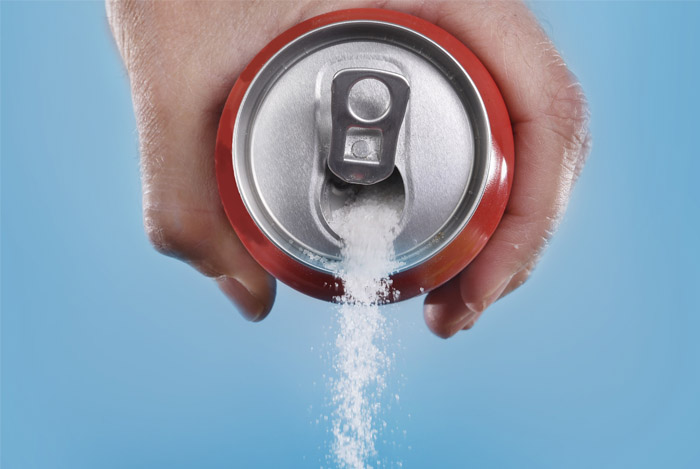
The plain truth is that carbs equal sugar, and you guys know sugar is my number one enemy in the nutrition world.
When you eat carbs, they break down to glucose, a form of sugar that your body uses as a fuel source for energy. Your body and brain love to work on sugar; it’s fast-acting and easily accessible.
The problem is that most people are eating too many darn carbs and consuming way too much sugar in their diets as a result.
In fact, the USDA’s recommended daily allowance for carbs is:
“Between 45 and 65 percent of your total caloric intake… Based on a 2,000-calorie diet, this would equate to between 225 and 325 grams of carbohydrates daily.”
That, in my opinion, is way too high for most of us who don’t burn this sugar off during strenuous exercising each day. What happens when you have too much sugar in your body? It turns to fat.
Are you eating too many carbs? An excess of carbs in your diet has been linked to:
- Weight gain
- Feeling fatigued, tired, or foggy-headed after you eat
- Cravings for sweets and starchy foods, especially during times of stress or anxiety
- Fluctuating energy levels
- Becoming light-headed and irritable when you’re hungry
- Developing a dangerous apple-shaped body
On the flip side, a low-carb diet has been proven to help:
- Improve blood sugar levels
- Lower blood pressure
- Better cholesterol numbers
- Weight loss
- Epilepsy and seizures
- Reverse insulin resistance
- Reduce inflammation
- Regulate or eliminate PCOS
- Lessen the effects of Alzheimer’s and Parkinson’s diseases
Seeing all of these benefits, I bet you can’t wait to get started, right?
Let’s Be Clear About Which Specific Carbs We’re Avoiding
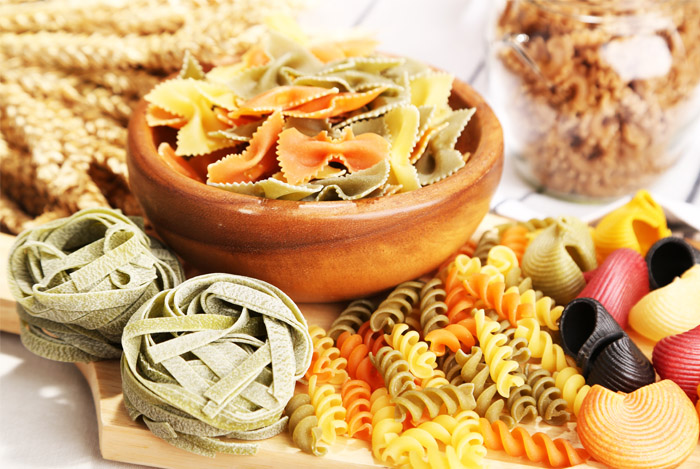
You’re not eliminating all carbs from your diet. We do need some carbs, just healthier carbs. This goes beyond choosing whole grain bread over white bread.
Going low-carb means we’re cutting out:
- All bread
- All grain-based flour
- Processed sugar
- All pasta, couscous, rice, quinoa, oats
- Beans, legumes
- Starchy veggies and fruits
Veggies? Fruits? Really?
Most people think of all fruits and veggies as inherently healthy, but ask a diabetic which fruits and veggies are the healthiest and you may be surprised to learn the truth.
For example, a starchy veggie like a medium potato, which has 37g of carbs and measures between a 40 and 100 on the glycemic index (GI), is close to pure sugar to your body.
Compare that to cauliflower, which has just 8g of carbs for the same serving size and comes in at a zero on the GI, it’s pretty easy to see the big difference.
These are the healthy swaps you’ll be making when you go low-carb.
You WILL Lose Weight
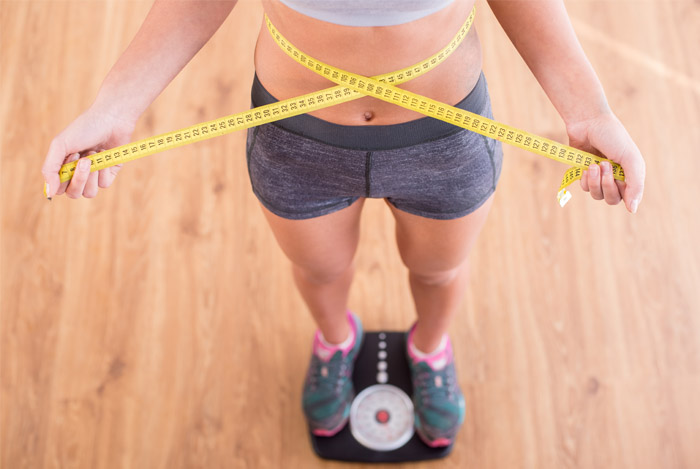
When you severely limit the amount of carbs you’re eating (which may seem impossible to you now), your body switches from being in a state of glycolysis, which is when your body gets energy from carbs, to a state of ketosis, which is when your body gets all of its energy from fat.
You heard that right!
Your body will become a fat-burning machine if you starve it of the carbs it’s typically used to burning for energy.
Eating carbs every day never gives your body a chance to burn fat because sugar is so easy for it to use.
In a state of ketosis, your body will not just burn the fat you eat, it will also look for stored fat deposits to burn as well. How can you beat that?
Pay Attention to Your Electrolytes
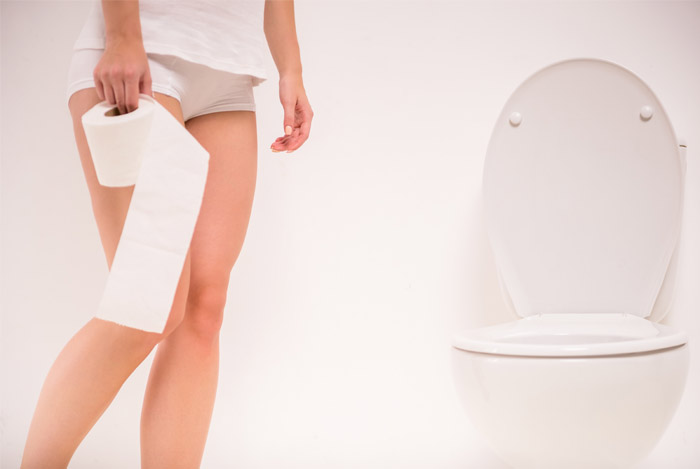
Low-carb dieting has the unwanted side-effect of lowering your potassium, magnesium, and sodium levels—key electrolytes that are vital to your body’s functioning.
First, since these minerals are typically added to “fortified” or “enriched” carb products, which you won’t be enjoying, you’ll need to find them in other foods.
Second, carbs retain water in your body, so when you cut them out, you’ll also lose a lot of water weight. The issue is that every time you get rid of that water, you’re also flushing electrolytes down the toilet, too.
Paleo Leap offers a quick electrolyte drink perfect for those of you avoiding sugary sports drinks (aka everyone!).
Just dissolve ¼ teaspoon of lite/low-sodium salt (which is half sodium, half potassium) with ¼ teaspoon regular salt and 1–2 teaspoons of Epsom salts in as much water as you need to make it palatable.
You’ll have sodium, potassium, and magnesium (Epsom salts) in one easy drink. Just make sure you add the Epsom salts to your diet gradually or you may have tummy trouble.
Don’t wait until you spot the signs of a magnesium deficiency; keep an eye on your levels starting today.
Speaking of monitoring…
Start Tracking Your Nutritional Intakes
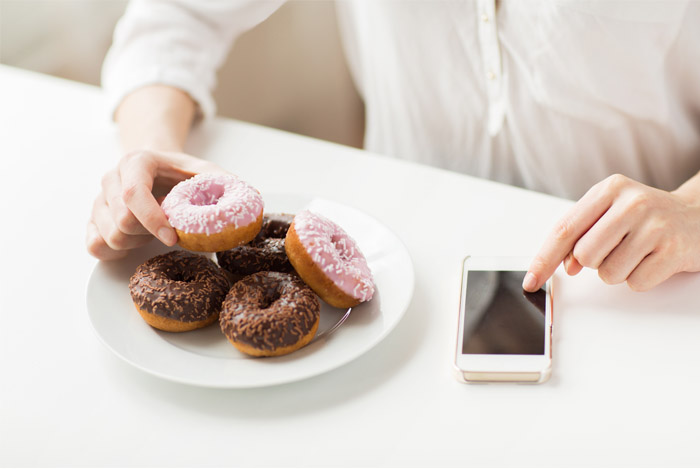
I would like you to start tracking your nutritional intake with a food tracking app such as MyFitnessPal or LoseIt!.
Not only will this help you stay on track as you watch your carb, protein, and fat macros for the day, but it will also provide valuable information you can use to compare after your 30 day challenge is up.
Apps like these even monitor your electrolyte levels. When I first started tracking my eating habits, I was genuinely surprised by both how much I was eating and how many nutrients I was missing.
Just keep in mind that these apps may only show you a total carb count for the day, but the numbers we’ll be using are for net carbs.
To calculate a net carb, take the total number of carbs and subtract the dietary fiber.
For example, one medium artichoke has 14g of carbs, but 10g are fiber; so your net carbs are 4g.
The 30 Day Low-Carb Challenge
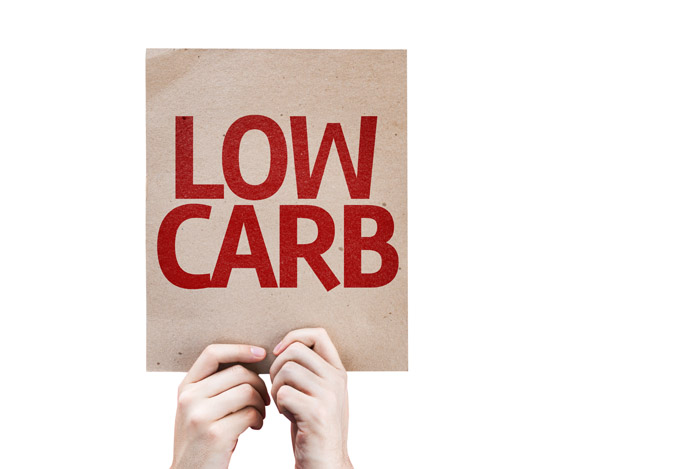
If you follow a LCHF diet like Atkins, your induction phase into the low-carb world caps your net carb count for the day at 20g.
While you can certainly start at 20g, I’m more of a fan of weaning my clients off carbs and sugar at a slower pace.
“Ketosis usually kicks in after 3 or 4 days of eating less than 50 grams of carbohydrates per day,” according to WebMD.
Most Americans are going to hate the first phase of low-carb dieting because you’re not only eliminating sugar, but you’re reprogramming your body to use fats and not carbs, even though your body is in love with sugar and carbs.
You may experience headaches, irritability, drowsiness, fatigue, and a slew of other symptoms as your body breaks its sugar addiction.
By the end of our 30 days, you’ll have no problems keeping your carb counts under 20g/day.
Follow this guideline for your net carbs per day and feel free to mix and match foods on this list:
Days 1–7: 75g Net Carbs/Day
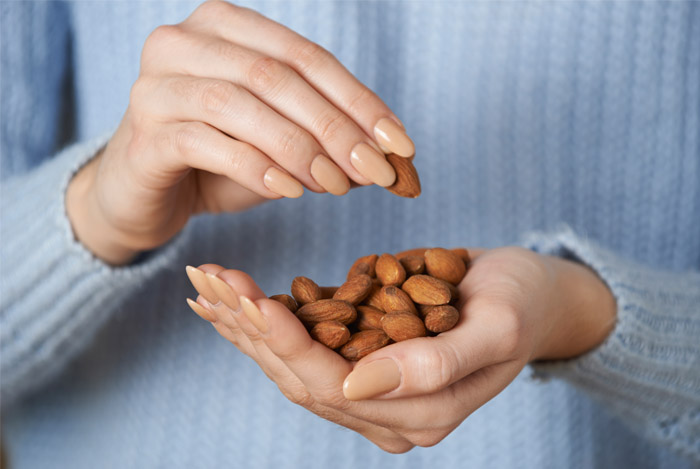
Breakfast options:
- Bacon, avocado, jack cheese omelette
- Sausage and pumpkin breakfast casserole
- Keto white pizza frittata
Lunch:
- Avocado egg salad (replace mayo with avocado)
- Broccoli, spinach, and leek soup
- Prosciutto, mozzarella, and spinach salad with dressing
Dinner:
- Chicken thighs with Brussels sprouts cooked in bacon grease
- Spaghetti squash with mushrooms and gruyere cheese
- Pork loin with roasted garlic and lemon broccoli
Snacks:
- Almonds
- Roasted pumpkin seeds (pepitas)
- Cheddar cheese square
Days 8–14: 50g Net Carbs/Day
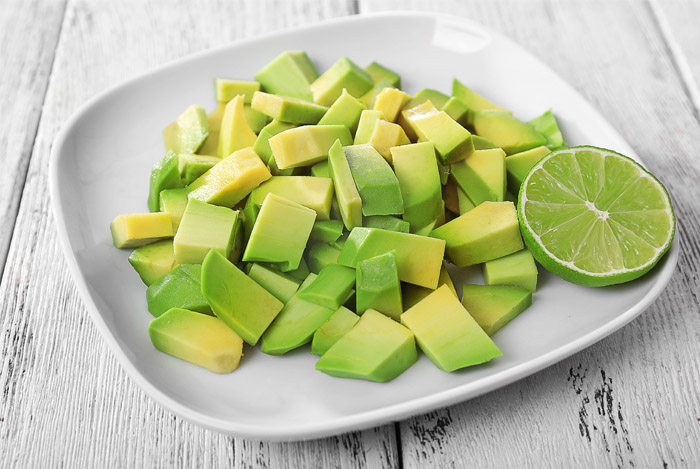
Breakfast:
Lunch:
- Broccoli, cheese, and beef soup
- Smoked salmon in avocado boats
- Avocado and Feta salad
In a large bowl, combine 1 large seedless cucumber, 1 large avocado, juice from 1 lemon, ⅓ cup crumbled feta, and 1 tablespoon of dill.
Gently stir to combine. Season with salt and black pepper, to taste. Makes two servings.
Dinner:
- Chicken breast stuffed with spinach, bacon, and goat cheese with one medium artichoke
- Pork chops with parmesan roasted broccoli
- Slow Cooker Chicken Tikka Masala
Snacks:
- Macadamia nuts
- Blackberries
- Mozzarella cheese stick
Days 15–21: 25g Net Carbs/Day
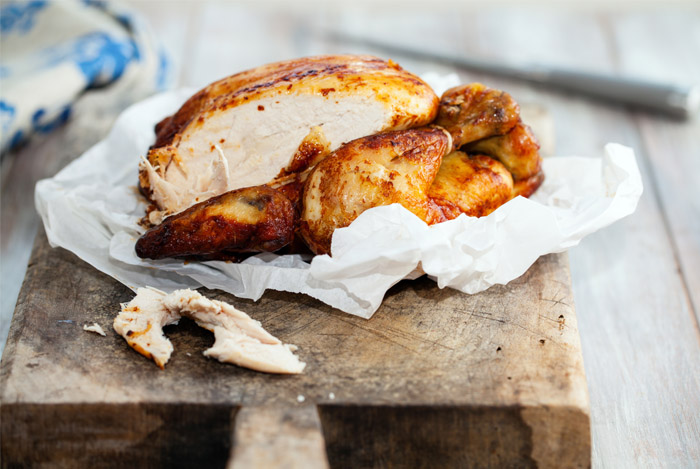
Breakfast:
- No-carb banana protein pancakes
- Spinach, feta, mushroom omelette
- Steak and eggs
Lunch:
- Cloud bread, lettuce, deli meat, avocado
- Guacamole deviled eggs
- Broccoli, chicken, and cheese zucchini boats
Dinner:
- Roasted chicken breast with steamed broccoli and cheddar cheese
- Shrimp, fennel, and arugula salad
- Grilled salmon with avocado salsa
Snacks:
- Walnuts
- Sunflower seeds
- Easy, Peasy Cheese Crackers
Days 22–30: 20g Net Carbs/Day
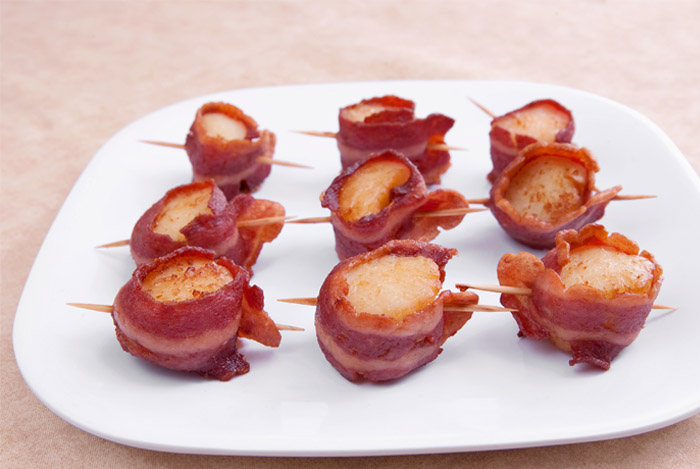
Breakfast:
- Chia pudding
- Bacon, cheddar, chive omelette
- Easy Shakshuka
Lunch:
- Raw spinach salad with deli meat, dressing, and bacon wrapped avocado
- Superfood Keto Soup
- Tuna or Mackerel Lettuce Wraps:
Combine two 120–125 g cans of fatty fish with 1 teaspoon English mustard, 1 tablespoon sour cream, a pinch of cayenne, lemon juice, sea salt, and freshly ground pepper to taste. Spoon in lettuce wrap. Makes 4 servings.
Dinner:
- Bacon-wrapped scallops
- Skirt steak and cauliflower mash with bacon and gouda cheese
- Herb-baked salmon with creamed spinach
Snacks:
- Pecans
- Goat cheese ball with spices or nuts
- Raspberries
- Almond-pistachio fat bombs
Pick any combination of these during your 30 days and try to make bigger batches so you have leftovers to take for lunch the following day.
Feel free to add more low-carb veggies to any meal to make sure you’re getting enough fiber.
Don’t be surprised if your cravings diminish and you’re too full to eat all of your calories for the day—replacing carbs with fat and fibrous veggies means you’ll be feeling fuller longer and won’t be so hangry all the time.
You can start adding in more carbs slowly after the 30 days, but once you feel the difference in how efficiently your body’s running without so many, you probably won’t even want to.
Ready? Set. Go!
Think you can handle the 30-day low-carb challenge? I know you can! I’d love if you shared your progress and results with me in the comments—I can’t wait to hear how awesome you did!
The post The 30 Day Plan to Eliminate Carbs from Your Diet appeared first on Nutrition Secrets.
http://www.nutritionsecrets.com/the-30-day-plan-to-eliminate-carbs-from-your-diet/
No comments:
Post a Comment